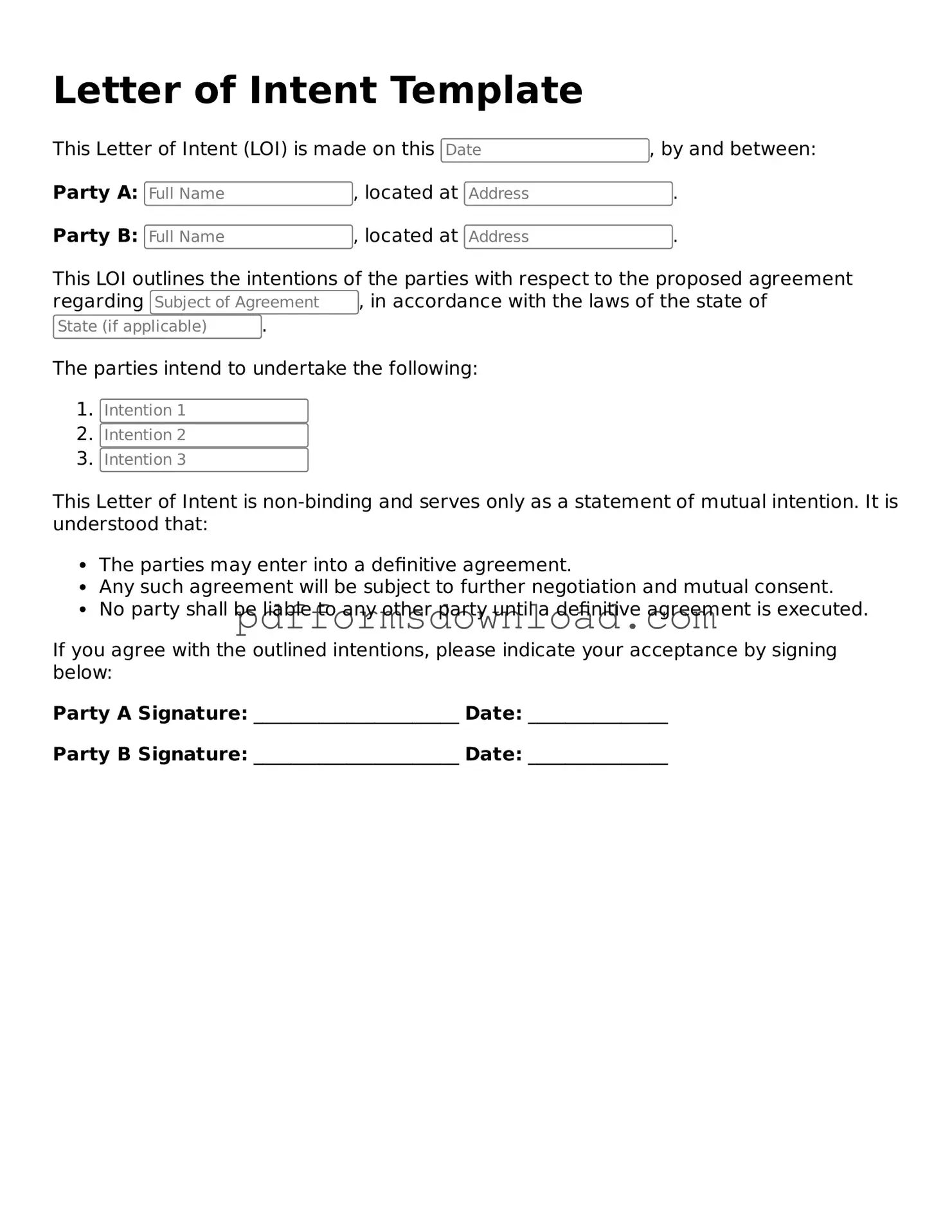What is a Letter of Intent?
A Letter of Intent (LOI) is a document that outlines the preliminary understanding between two or more parties before a formal agreement is finalized. It serves as a starting point for negotiations and can cover various topics, including business deals, real estate transactions, or academic admissions. While it is not legally binding, it expresses the intention of the parties to move forward with discussions or agreements.
Why is a Letter of Intent important?
An LOI is important because it clarifies the intentions of the parties involved and sets the groundwork for future negotiations. It helps to ensure that all parties are on the same page regarding key terms and conditions. Additionally, an LOI can help to identify potential issues before they become significant problems, thus saving time and resources in the long run.
Is a Letter of Intent legally binding?
Generally, a Letter of Intent is not legally binding. However, certain sections may be enforceable if they are clearly stated as binding. It is crucial to specify which parts of the LOI are intended to be binding and which are not. For example, confidentiality clauses or exclusivity agreements may be binding, while the overall intent to negotiate may not be.
What should be included in a Letter of Intent?
A well-drafted Letter of Intent should include key elements such as the names of the parties involved, a description of the purpose of the LOI, terms and conditions being negotiated, timelines for actions, and any confidentiality or exclusivity clauses. It may also outline the next steps in the negotiation process and specify any conditions that must be met for a formal agreement to be executed.
How long does it take to prepare a Letter of Intent?
The time required to prepare a Letter of Intent can vary based on the complexity of the negotiations and the number of parties involved. Generally, a straightforward LOI can be drafted in a few hours, while more complex situations may take several days to finalize. It is advisable to allow sufficient time for revisions and discussions among the parties.
Can a Letter of Intent be modified after it is signed?
Yes, a Letter of Intent can be modified after it is signed, but both parties must agree to the changes. It is essential to document any modifications in writing to avoid misunderstandings in the future. This can be done through an amendment to the original LOI or by drafting a new LOI that incorporates the changes.
Who should prepare the Letter of Intent?
While anyone can draft a Letter of Intent, it is often beneficial to have a legal professional involved, especially in complex negotiations. A legal expert can help ensure that the document accurately reflects the intentions of the parties and complies with relevant laws. This can provide added protection and clarity for all involved.
When should I use a Letter of Intent?
A Letter of Intent is useful in various situations, such as when entering into business negotiations, pursuing a real estate deal, or applying for academic programs. It is particularly beneficial when the parties want to outline their intentions before investing significant time and resources into formal agreements. Using an LOI can help facilitate smoother negotiations and set clear expectations from the outset.
What happens after a Letter of Intent is signed?
After a Letter of Intent is signed, the parties typically move forward with negotiations to finalize the details of the agreement. This may involve further discussions, due diligence, and drafting of a formal contract. The LOI can serve as a roadmap during this process, guiding the parties toward a successful conclusion. If any issues arise, the LOI can help to resolve them by referring back to the initial intentions outlined in the document.
